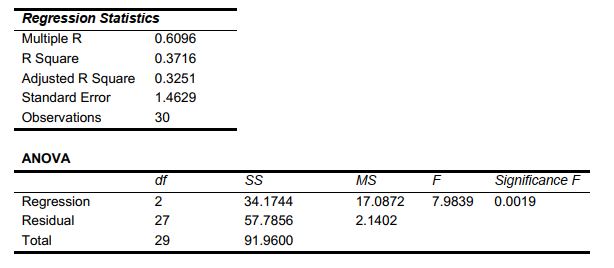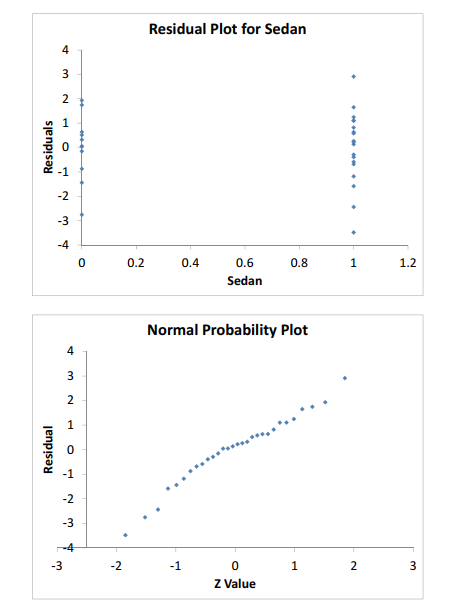SCENARIO 14-16 What are the factors that determine the acceleration time (in sec.) from 0 to 60 miles per hour of a car? Data on the following variables for 30 different vehicle models were collected: Y (Accel Time): Acceleration time in sec. X₁ (Engine Size): c.c. X₂(Sedan): 1 if the vehicle model is a sedan and 0 otherwise The regression results using acceleration time as the dependent variable and the remaining variables as the independent variables are presented below. 
 The various residual plots are as shown below.
The various residual plots are as shown below. 
 The coefficient of partial determinations
The coefficient of partial determinations  are 0.3301 and 0.0594 respectively. The coefficient of determination for the regression model using each of the 2 independent variables as the dependent variable and the other independent variable as independent variables
are 0.3301 and 0.0594 respectively. The coefficient of determination for the regression model using each of the 2 independent variables as the dependent variable and the other independent variable as independent variables  are, respectively, 0.0077 and 0.0077.
are, respectively, 0.0077 and 0.0077.
-Referring to Scenario 14-16, what is the p-value of the test statistic to determine whether being a sedan or not makes a significant contribution to the regression model in the presence of the other independent variable at a 5% level of significance?
Definitions:
Value Dimensions
Key aspects or factors that represent the basic principles or beliefs held by an individual or society.
Masculinity-Femininity
Refers to a set of attributes, behaviors, and roles associated with boys and men (masculinity) and girls and women (femininity) within a particular culture.
Uncertainty Avoidance
A cultural dimension that describes the extent to which societies tolerate ambiguity and uncertainty, impacting their norms, values, and behaviors in efforts to minimize or avoid these states.
Individualism-Collectivism
A cultural dimension that contrasts societies that prioritize individual goals, autonomy, and rights with those that emphasize group goals, cohesion, and the common good.
Q32: Referring to Scenario 16-14 , the
Q54: Referring to Scenario 14-15, there is sufficient
Q62: Referring to Scenario 14-10, the regression sum
Q76: Referring to Scenario 13-8, the value
Q91: Referring to Scenario 15-6, the model
Q107: Referring to Scenario 16-15-A, you can conclude
Q151: Referring to Scenario 16-14, to obtain
Q156: Referring to Scenario 14-20-B, construct the residual
Q199: Referring to Scenario 14-2, suppose an employee
Q218: If the correlation coefficient (r) = 1.00,